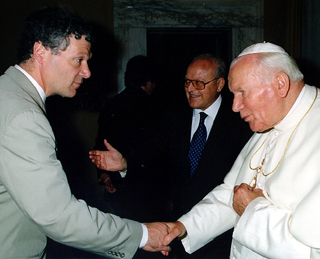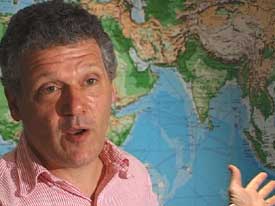Walter Bender, MS
Walter Bender, MS is the founder of Sugar Labs, a nonprofit
foundation that serves as a support base for the community of educators
and software developers who are extending the Sugar user interface.
Sugar is designed to enhance the primary educational experience by
emphasizing collaboration and expression.
Prior to that, Walter was
president for software and content of the One Laptop per Child
association, where he developed and deployed technologies that are
revolutionizing how the world’s children engage in learning. Before
taking a leave of absence from MIT, he was executive director of the
MIT Media Laboratory. He was also holder of the Alexander W. Dreyfoos
Chair.
Walter is currently on sabbatical from MIT, where he is a senior
research scientist and director of the Electronic Publishing group.
He directed the Gray Matters special interest group, which focuses
on technology’s impact on the aging population. In 1992, he founded
the News in the Future consortium and has been a member of the Lab’s
Simplicity, Things That Think, and Digital Life consortia. He became
Media Laboratory director in 2000. He earned his BA from Harvard
University in 1977. He joined the Architecture Machine Group at MIT
in 1978. He earned his MS at MIT in 1980.
A founding member of the Media Laboratory, throughout his career Walter
has engaged in the study of new information technologies, particularly
those that affect people directly. Much of the research addresses the
idea of building upon the interactive styles associated with existing
media and extending them into domains where a computer is incorporated
into the interaction. He has participated in much of the pioneering
research in the field of electronic publishing and personalized
interactive multimedia. He has worked closely with pioneers in the field
of technology and learning such as Seymour Papert, Marvin Minsky, and
Alan Kay for more thirty years.

Walter Bender and Pope John Paul II
He was a member of the IBM Mobile Scientific Advisory Board; and a board member of Salient Stills, Inc. He is the author of numerous technical conference and journal articles, book chapters, and magazine articles about media technology. He has lectured nationally and internationally on the topics of electronic publishing, media technology, and computer graphics. He was the 1992–1993 Visiting Lecturer of The Society for Imaging Science and Technology. He has served as a consultant in the areas of graphic design, digital typography, digital color, and interactive video.
Walter authored Twenty Years of Personalization: All about the “Daily Me”, Techniques for data hiding, The seven secrets of the Media Lab, Expectations of the I-Community, What is Normal? How can open architectures change expectations about who is creative?, When product designers use perceptually based color tools, and Document layout and color driven image retrieval, and coauthored Affective Learning — a manifesto, Sensing and Effecting Environment with Extremity Computing Devices, Salient stills: Process and practice, Salient Video Stills: Content and Context Preserved, and Second messenger: increasing the visibility of minority viewpoints with a face-to-face collaboration tool.
His patents include Method and apparatus for data hiding in printed images, Method and apparatus for multi-bit zoned data hiding in printed images, Method of creating a high resolution still image using a plurality of images and apparatus for practice of the method, Method and apparatus for echo data hiding in audio signals, Method of creating a high resolution still image using a plurality of images and apparatus for practice of the method, and Video Image Compositing Techniques which he transferred to the public domain.





